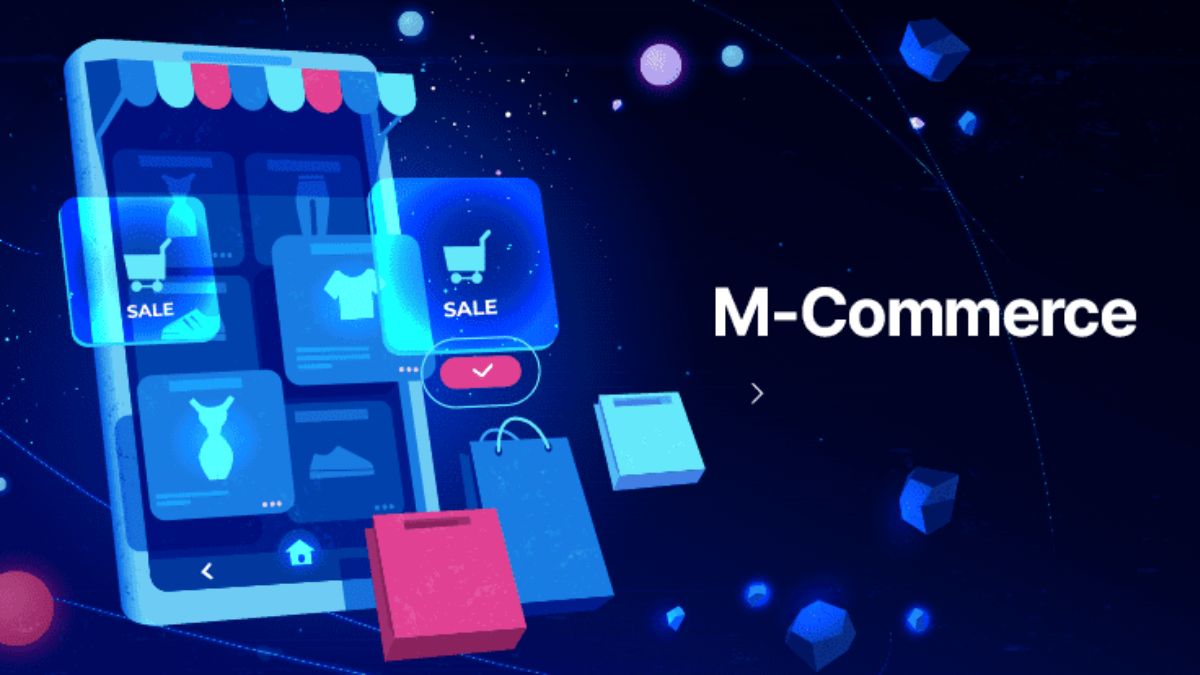Welcome to the ultimate guide to developing your m-commerce application! In today’s rapidly evolving digital landscape, mobile commerce has become a crucial avenue for businesses to reach their customers. Whether you’re a start-up looking to expand your online presence or an established company aiming to enhance user experience, creating a successful m-commerce app can significantly boost your sales and customer engagement. Join us as we dive into the ins and outs of building a top-notch m-commerce application that will set you apart in the competitive market. Let’s embark on this exciting journey together!
Understanding the Market for M-Commerce Applications
In the ever-evolving landscape of e-commerce, the realm of m-commerce applications is gaining significant traction. Understanding the market for m-commerce apps requires a deep dive into consumer behaviour and trends. Mobile devices have become an integral part of daily life, serving as a gateway to shopping on the go.
As more consumers rely on their smartphones for purchases, businesses must adapt by offering seamless mobile experiences. The market for m-commerce applications is diverse, catering to various industries such as retail, food delivery, travel bookings, and more.
With the rise of mobile payment options and in-app features like push notifications and personalized recommendations, m-commerce apps are reshaping how businesses engage with customers. To succeed in this competitive landscape, developers must stay informed about emerging technologies and user preferences to deliver innovative solutions that meet evolving market demands.
Planning and Research for Your App Development
Before diving into app development, thorough planning and research are crucial steps in ensuring the success of your e-commerce application. Start by defining your target audience – understanding their needs and preferences will guide the features you incorporate into your app.
Conduct market research to analyze competitors and identify gaps or opportunities for innovation. This insight will help differentiate your app in a crowded marketplace. Set clear goals for what you want to achieve with your app and outline a detailed strategy to reach those objectives.
Consider factors like budget, timeline, resources, and technical requirements during the planning phase. Create a roadmap that outlines each step of the development process from concept to launch. Collaboration between developers, designers, and marketers is essential for a cohesive app strategy that resonates with users.
Choosing the Right Platform and Technology
When it comes to developing your m-commerce application, choosing the right platform and technology is crucial for its success.
Consider the target audience and their preferences when deciding between iOS, Android, or a cross-platform approach. Each has its advantages and limitations that can impact user experience.
Research different development frameworks like React Native or Flutter that offer cost-effective solutions without compromising performance. Evaluate which technology aligns best with your project requirements.
Keep in mind scalability and future updates when selecting the backend infrastructure. Cloud-based solutions such as AWS or Google Cloud can provide flexibility as your app grows.
Collaborate closely with developers to ensure seamless integration of features like payment gateways or push notifications based on the chosen platform.
By making informed decisions about platforms and technologies early on, you set a solid foundation for creating a successful m-commerce app that meets both your business goals and user expectations.
Designing a User-Friendly Interface
When it comes to m-commerce app development, designing a user-friendly interface is crucial. Your interface should be intuitive and easy to navigate, allowing users to browse products effortlessly. Consider the layout, colour scheme, and font choices carefully to create a visually appealing design that resonates with your target audience.
Incorporate features like search bars, filters, and categories to help users find what they’re looking for quickly. Keep the checkout process simple and streamlined to minimize cart abandonment rates. Utilize high-quality images and engaging product descriptions to enhance the shopping experience.
Don’t forget about mobile responsiveness – ensure that your app functions seamlessly on all devices. Conduct usability testing with real users to gather feedback and make necessary improvements before launching your app. A well-designed interface can significantly impact user satisfaction and conversion rates in the competitive world of m-commerce apps.
Developing and Testing Your App
When it comes to developing your m-commerce application, attention to detail is key. Start by translating your design into a functional app through coding and programming. Ensure that the user experience flows seamlessly from browsing products to making purchases.
Testing is crucial in identifying any bugs or glitches that may hinder the performance of your app. Conduct thorough testing on various devices and operating systems to guarantee compatibility across different platforms.
User feedback during this stage can provide valuable insights for improvements before launching your app. Make sure all features work as intended, including payment processing, navigation, and push notifications.
Regularly update and maintain your app post-launch to keep up with evolving technologies and consumer expectations. This will help in retaining users’ interest and enhancing the overall performance of your e-commerce application.
Launching and Marketing Your App
You’ve put in the hard work to develop your m-commerce app, and now it’s time to launch and market it to the world. The launch of your app is a crucial moment that can make or break its success, so it’s essential to plan a strategic rollout.
Start by creating buzz around your app before the official launch date. Tease potential users with sneak peeks, behind-the-scenes content, and countdowns on social media platforms. Building anticipation can help generate excitement and curiosity.
Utilize various marketing channels such as social media advertising, influencer partnerships, email campaigns, and press releases to reach your target audience. Tailor your messaging to highlight the unique features and benefits of your m-commerce app.
Engage with early adopters and encourage them to provide feedback and reviews which can help build credibility for your app. Consider offering promotional deals or discounts during the initial launch phase to incentivize downloads.
Remember that launching an app is just the beginning; ongoing marketing efforts are critical for sustained growth. Monitor user engagement metrics regularly, gather insights from analytics data, and iterate on your marketing strategy based on performance results.
Maintaining and Updating Your App
Maintaining and updating your app is crucial to ensure its continued success in the competitive world of e-commerce. Regularly monitoring user feedback and performance metrics can help identify areas that need improvement or updates.
Bug fixes, security patches, and new feature enhancements are all part of the ongoing maintenance process. Keeping your app up-to-date with the latest technology trends and user preferences will help retain existing users and attract new ones.
Regularly testing your app on different devices and platforms is essential to ensure a seamless user experience across the board. Updating content, images, and promotions can also keep users engaged and interested in using your app.
By staying proactive with maintenance tasks, you can prevent any major issues from arising down the line. Remember, an updated app is a successful app in today’s fast-paced digital landscape!
Common Challenges and Solutions in M-Commerce App Development
When it comes to developing m-commerce applications, there are common challenges that developers often face. One of the main hurdles is ensuring seamless integration with various payment gateways and systems. This can be complex due to different security protocols and regulations.
Another challenge is optimizing the app for a variety of devices and screen sizes. Ensuring a consistent user experience across platforms can be daunting but essential for success in the competitive market. Moreover, dealing with high volumes of data securely poses a significant challenge.
To address these challenges, developers can leverage robust APIs for smooth payment integration. They can also use responsive design techniques to ensure adaptability across devices. Implementing encryption technologies and secure authentication methods is crucial for safeguarding sensitive data.
Constant monitoring, regular updates, and thorough testing are key solutions to tackling these challenges effectively throughout the development process. By staying proactive and agile in addressing issues as they arise, developers can deliver reliable m-commerce apps that meet users’ expectations seamlessly.
Conclusion: The Future of M-Commerce
The future of m-commerce is undoubtedly bright. With the increasing number of smartphone users and the convenience it offers, mobile commerce is here to stay. As technology continues to advance, there will be more opportunities for businesses to connect with their customers through mobile apps.
By following this ultimate guide on developing your m-commerce application, you are setting yourself up for success in this ever-growing market. Remember to stay updated with the latest trends and technologies, continuously improve your app based on user feedback, and always prioritize a seamless user experience.
Embrace the possibilities that m-commerce offers and tailor your app development strategy accordingly. The key lies in staying innovative, adaptable, and customer-centric. So go ahead, develop your m-commerce application with confidence and watch your business thrive in the digital era!










